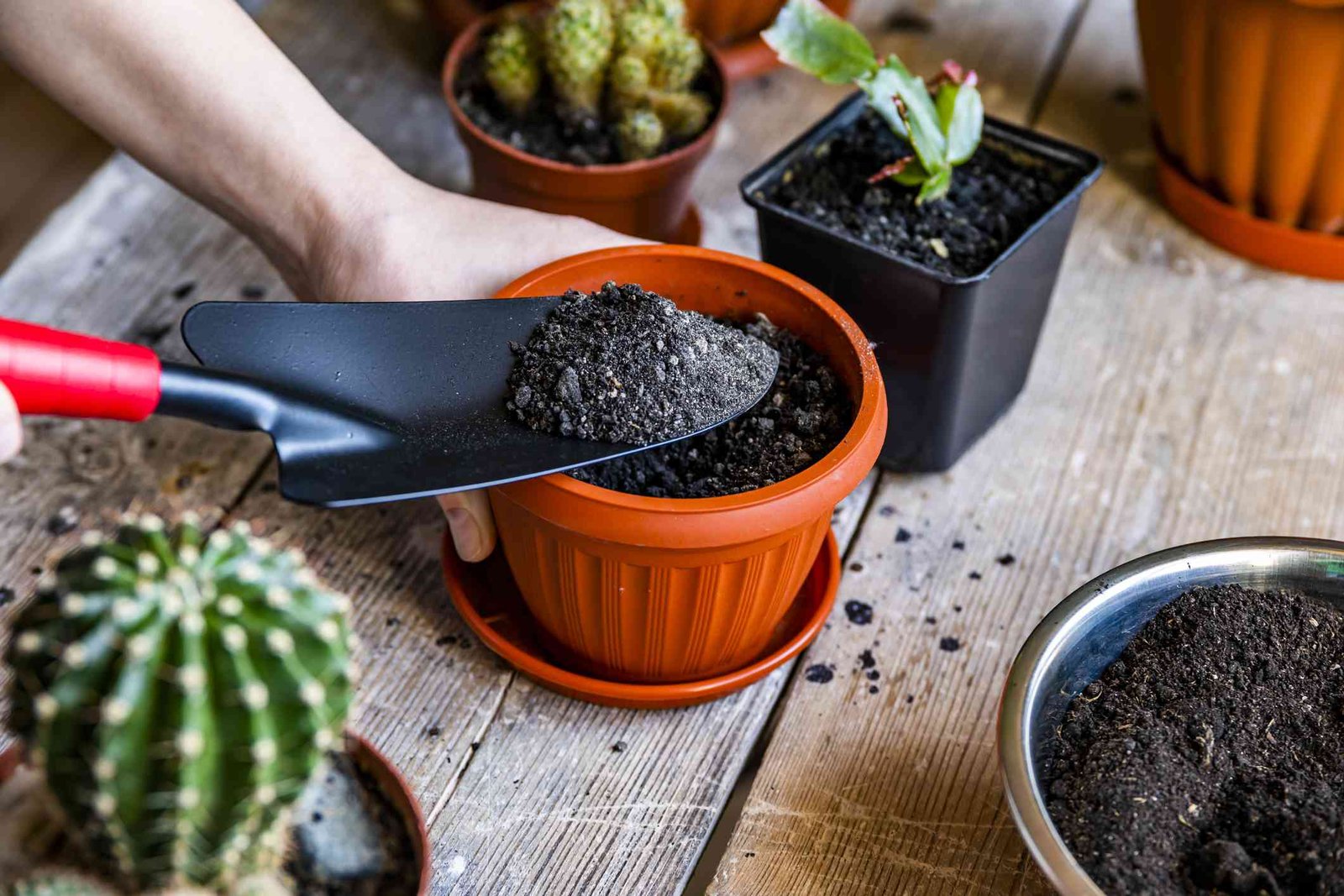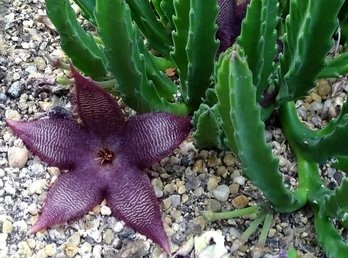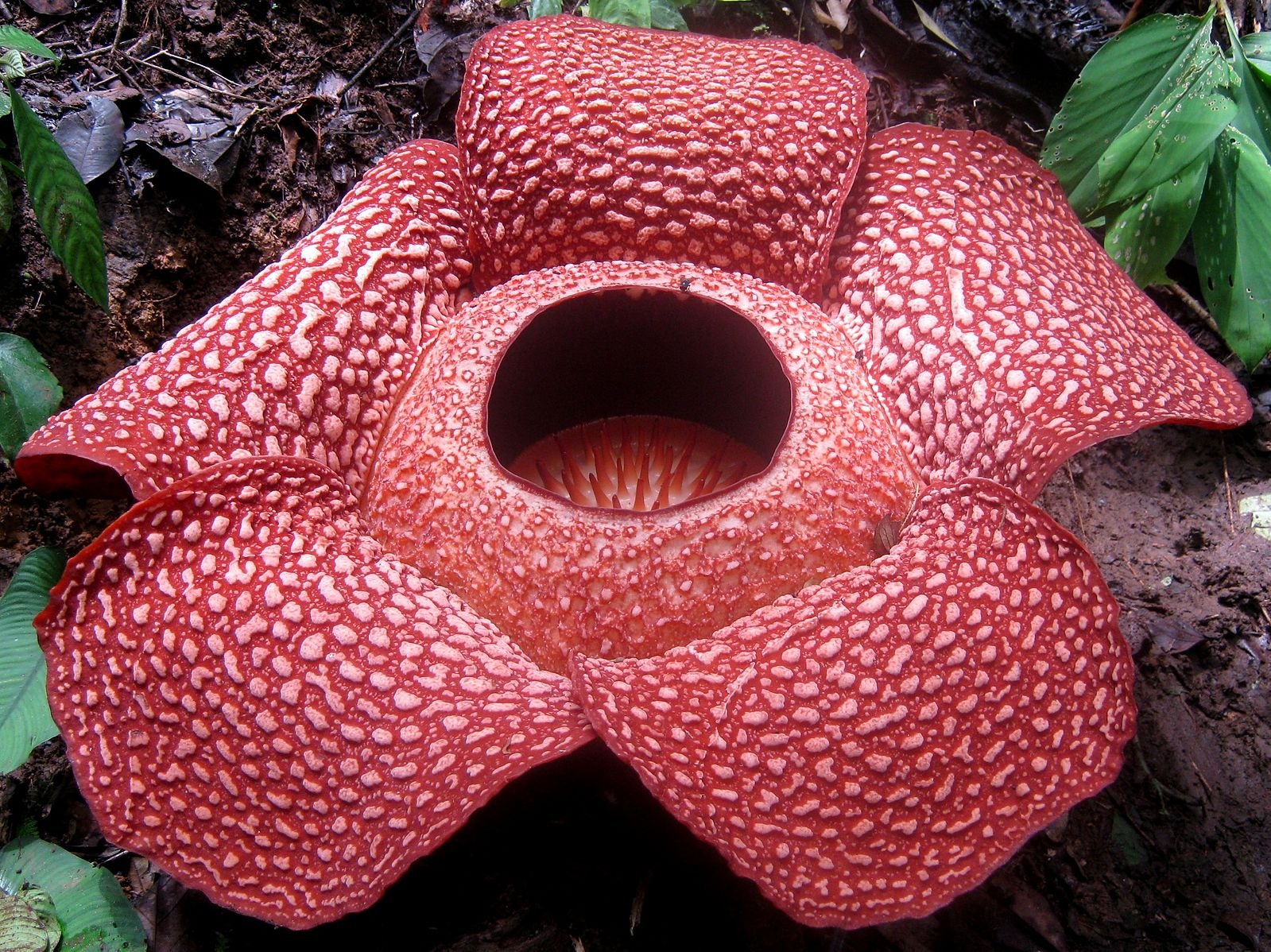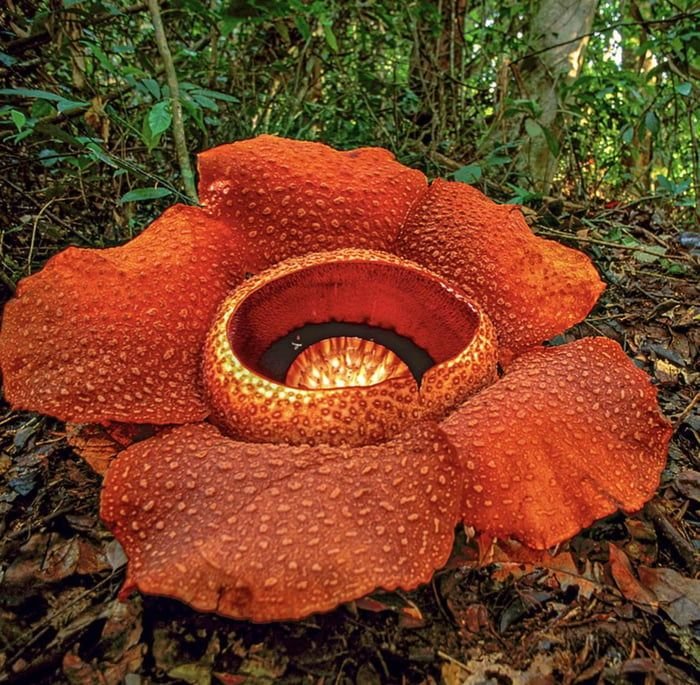Smelly Cactus And Succulent flowers are so bright and colorful that you might expect them all to have a sweet fragrance to match their attractiveness. But unfortunately, these smell very bad.
There are always two sides to nature, good and bad – this concept can be seen in Cactus and Succulent plants too.
Normally, Cactus and Succulent plants smell wonderful. But, nature is also an amicable creator of Smelly Cactus and Stinky Succulents.
Why Do Your Succulent Smell?

Generally, Succulents do not have a strong fragrance unless they are flowering.
In case, if your Cactus or Succulent gives off a strong scent any other time. Mostly, it is not a good sign.
As, if the Succulent starts giving off a foul/bad smell suddenly then, observe the plant thoroughly and look for signs of distress.
Common Reasons Why Succulents Have A Bad Smell
When reasoning Why Your Succulents Have A Smell? Then there are 2 Separate features,
1. Foul Smell Due To The Environmental Factors
This could be due to the following reasons.
(i) Root Rotting
The worst nightmare of any gardener or plant lover is the Rotting of Cactus Roots.
REASON :
Root Rotting can be a pretty common cause because of improper watering practices when the succulent regularly sits in waterlogged conditions for days.
RESULTS :
Succulents need low watering needs and when overwatered their roots easily catch root rot which starts giving off the smell of rotten eggs from the soil.
SOLUTION :
Do not water the Cactus and Succulents too much, wait until the cacti plant is very dry.
(ii) Fungal And Pest Effect in the soil

The most important aspect of growing plants indoors is to make sure the drainage system of your cactus is in the correct condition.
REASON :
Poor drainage of your Smelly Cactus And Succulent will remain damp for a long time which will easily help in the growth of fungal gnats (like a mosquito) and pests of all kinds.
RESULTS :
The Succulent and Cactus emit disgusting foul smells.
SOLUTION :
Keep your Succulent drainage system dried, make sure the soil is not wet.
(iii) Urination by Pets
When your pets urinate over your Succulents and cacti – this can cause your Succulent plants to smell bad.
REASON :
A reason which can be easily overlooked while investigating the reasons behind why your cacti plants are smelling bad suddenly even after you look after your plants very carefully. Sometimes, pets or other animals urinate over your cacti plants.
RESULTS :
Your Succulent gives out a bad smell.
SOLUTION :
Make sure you grow your Succulent or Cacti plant in a higher place, where any of your pets or other bypassing animals could urinate.
(iv) Usage of Excessive amount of Compost in the soil mix
It is not never a must to use compost when you grow your Succulents in pots using compost.
This is because succulents are well adapted to grow in arid drought-prone conditions of nutrient-deficient soil, as they can store water.
REASON :
When you use too much compost, this will do more harm than good for growing succulents in pots as the drainage of the soil will be significantly low.
Further, compost is known to stink a lot. If you had made your own compost and added a good amount of compost in the soil then, mix in your succulent.
RESULTS :
For Example, if you use too many greeneries in the compost mix then it can smell like sewage. So, you have to make sure the balance is right if you want to use it as compost.
SOLUTION :
Then, it can be a reason behind the foul smell.
2. Naturally Smelly Cactus And Succulent
Certain Types Of Succulents are known to be Smelly Naturally.
Yes, some succulents smell sweet, especially during the blooming season same that, there are kinds of cacti And succulents that emit a kind of Bad Smell naturally as their birth character.
Do Cactus Flowers Smell Bad?
Yes, there are types of Cactus Flowers that naturally emit a very foul smell, some like; Rotten Egg, Rotten Meat, Corpse/ dead body bad odor, and some like smell like poop.
Do Cactus Flowers Smell Bad?
Yes, there are types of Cactus Flowers that naturally emit a very foul smell, some like; Rotten Egg, Rotten Meat, Corpse/ dead body bad odor, and some like smell like poop.
How To Take Care Of Stinky Cactus Plants?

If you want to How To Take Care Of Smelly Succulents then, the caring tips of Starfish Cactus plants – you can apply those caring tips for any Smelly Cactus plants.
Caring Tips For Starfish Cactus
Growing Starfish Cactus Flowers as houseplants is ideal in most zones of the United States, as you can move them outside in the heat of summer or grow them in a greenhouse.
These Starfish Flowers are easy to take care of these plants in a variety of light conditions to help them grow well.
1. Sunlight Exposure
These plants will survive well in full and also in partial sunlight and the morning light is the best time to protect the Cactus plant from harsh mid-day rays.
2. Soil
Starfish Cactus like to have crowded roots to keep them in a 4 to 6-inch (10 to 15 cm ) pot with well-drained soil.
3. Fertilizer
These Cacti Plants do not need any fertilizer but you can fertilize your Stinky Cactus with a half-diluted fertilizer of indoor plant food in the early spring.
4. Temperature
These Stinky Cactus prefer a warm temperature and it should be kept above 50° degrees Fahrenheit in the wintertime.
5. Watering Conditions
You should water your Smelly Cactus when the soil is completely dried between watering.
Water your Smelly Cactus in small quantities at all times and very little during the wintertime.
Different Species Of Smelly Cactus And Succulent
There are many different species of Bad Smelling Flowers In The World. Which you will know now.
1. Starfish Cactus Flower

The most commonly known Smelly Cactus Flowers are of the Starfish Cactus.
Stapelia Grandiflora is a species of flowering plant in the genus Stapelia of the family Apocynaceae.
It is commonly called the ‘Carrion Plant, Starfish Flower, giant toad plant or Starfish Cactus’ but this species of plant are not related to cacti at all.
This plant is native to South Africa, including the Northern Cape, Free State, and Eastern Cape.
Identification Of Starfish Cactus
The stems can be either straight or ascending from 9 to 10 cm long and up and 3 cm in diameter (usually less than 2 cm).
Smelly Cactus Flowers Of Starfish Cactus
The Flowers of Starfish Cactus are velvety and smaller in size than those of Stapelia Gigantea – (a species of Starfish Cactus)
These Bad Smelling Flowers grow in various shapes and colors.
The Starfish Flowers are usually bloomed in the late summer and fall seasons.
How Does a Starfish Cactus Flower Smell?
Starfish Flower Cactus may produce amazing five-petaled flowers that emit an unpleasant odor. This scent attracts flies and other insects, which helps to pollinate the blooms of Starfish Cactus.
The Smelly Flowers are red to brown and may be mottled with a couple of colors.
Flies like Bottle flies are green and blue-colored insects that hover around garbage and decaying matter — they love the way Stapelia Gigantea smells because they think it is rotting meat.
Many plants attract pollinators with sweet floral scents, but this thornless succulent does it differently as it attracts pollinators by emitting the scent of a decaying carcass.
Flies attracted to the Stinky Cactus are further fooled when they land on the succulent’s petals.
As, the bad smell of the Flowers and the petals which can be up to 10 inches in width across, have a leathery texture edged with a thatch of long, white-colored and possess hair-like fibers that mimic the feel of a dead animal’s body.
As flies traipse across the petals and their bodies brush against the male and female parts of the plant, which transport and transfer pollen from the Flower and ensure the survival of more Starfish Cactus plants in the future.
Where Can You Buy Starfish Cactus Plants To grow?
You can buy these smelly Cactus And Succulent through the most popular Online shopping site known as Amazon – Smelly Cactus – Starfish Cactus
2. Carrion Cactus Flower

The genus Huernia is a family Apocynaceae and subfamily of Asclepiadoideae which grow natively in Eastern and Southern Africa and Arabia and was first described as a genus in 1810.
Difference Between Starfish Cactus And Carrion Cactus
There are no 100% differences between the Stapelia and Huernia Loesnaria until these Smelly Cactus And Succulent bloom their Flowers.
Starfish Cactus Flowers are big and fuzzy while, the Huernia looks spikier.
Physical Structure Of The Carrion Cactus And Carrion Cactus Flowers
This Smelly Cactus consists of perennials, and stem Succulents.
The Flowers are five-lobed, usually more like a funnel or bell-shaped than in the closely related genus of Stapelia
The Stinky Flowers are often striped vividly in contrasting colors or tones and some are glossy while others are matte and wrinkled depending on the species concerned.
Usually, the flowers are in a variation of red, yellow, or brown in color.
How Does a Carrion Cactus Flower Smell?
To pollinate, the Carrion Cactus Flowers attract flies by emitting a scent similar to that of the genus of Stapelia and Hoodia.
They emit the smell like the smell of rotten eggs.
Where Can You Buy Starfish Cactus Plants To grow?
You can buy these Smelly succulents online through Amazon – Smelly Cactus – Carrion Cactus
3. Rafflesia

Rafflesia is also a type of Smelly Cactus from the genus of parasitic flowering plants in the Cactaceae family of Rafflesiaceae.
This genus contains approximately about 28 species including 4 incompletely characterized species recognized in 1997 by William Meijer on this genus.
The genus of Rafflesia was found in Southeast Asia, mainly in Indonesia, Malaysia, Thailand, and the Philippines.
The first British person to see one of these Smelly Succulent was Joseph Arnold in 1818, in the Indonesian rainforest in Bengkulu Sumatra.
These species have enormous flowers which arise from the buds up the ground or directly from the lower stems of their host plants.
This species of Succulent plant has the largest flowers in the world and these Flowers are very popular.
Physical Structure Of Rafflesia Flower
This Smelly Succulent plant has no stems, leaves, or roots.
In addition, these Smelly Succulent consist of the only angiosperms lacking leaves, of vines in the genus of Tetrastigma – (a plant in the grapevine family), which spread its absorptive organ, inside the tissue of the vine.
In some species such as Rafflesia Arnoldii the flower may be over 100 cm (40 inches) in diameter, and weigh up to 10 kg (22 lb).
Growth Characteristics Of Smelly Rafflesia Flower
It is a holoparasite which means that is not able to photosynthesize and this plant obtains all nutrients and water from a host plant.
The only part of the plant that can be seen outside the host vine is the five-petalled flower.
A Rafflesia that bloomed in West Sumatra in 2019 was measured to be almost 4 feet (120 cm) in diameter.
This Rafflesia Flower was the largest flower ever recorded – 4 inches (10 cm) wider than the flower reported as the largest in 2017.
Further, Even one of the smallest species of Rafflesia is the Rafflesia Baletei, which has 12 cm (5 inches) diameter flowers.
How Does a Rafflesia Flower Smell?
The flowers look and smell like rotting flesh and the foul odor attracts insects such as carrion flies, which transport pollen from male to female flowers.
Most species of Rafflesia have separate male and female flowers, but a few have hermaphroditic flowers which means male and female genetic in the same Flower.
Little is known about seed dispersal as Tree Shrews and other forest mammals eat the fruits of this Smelly Succulent.
The seeds of this Rafflesia are extremely tiny and are most likely dispersed by ants. The seeds are packed into berries like Structure that contains hundreds of thousands of seeds.
Difference Between Rafflesia And Other Species
There are mainly 2 species of Rafflesia but there are more species in this wonderful Smelly Cactus.
1. Between Rafflesia And Amorphophallus
Both Rafflesia and Amorphophallus are flowering plants, but they are unrelated to each other.
Rafflesia Arnoldii has the largest “single” flower of any flowering plant in terms of the Flower’s weight.
Amorphophallus Titanum has the largest “unbranched” inflorescence, while Rafflesia Flowers are larger than the Amorphophallus Titanum species.
2. Between Rafflesia And Corypha Umbraculifera
Corypha Umbraculifera forms the largest “branched” inflorescence, containing thousands of flowers and the talipot are individual plants that die after flowering.
Rafflesia is also remarkable for showing a large horizontal transfer of genus from their host plants. This is well known among bacteria but not higher organisms.
4. Smelly Titan Arum

Amorphophallus Titanum is well known as Titan Arum and it is a flowering plant with the largest unbranched inflorescence in the world these plants are native to Sumatra.
This Smelly Succulent is known as the Corpse Flower or Corpse Plants.
Physical Structure Of Titan Arum
The talipot palm means a tall Indian palm with very large fan-shaped leaves and a flower that can reach about 8 m in height.
But, Corypha Umbraculifera also has a larger inflorescence, but it is branched not unbranched.
The titan arum plant has berries arranged in a regular cylindrical form or like a crystal.
This plant’s inflorescences can reach over 3 m (10 ft) in height and it is around 50 kg (110 lb)
In the case of the titan arum, the spathe – ( Flower cluster) is deep green on the outside and dark burgundy red inside, with a deep furrowed (like wrinkles) texture.
Due to its odor, like that of a rotting corpse, the titan arum is characterized as a carrion flower and is also known as the corpse flower or corpse plant
Growth Characteristics Of Titan Arum Flower
The spadix part is where the Bad smell of Titan Arum is produced where it attracts Carrion flies. It is hollow and a large stick that’s where the plant bears two rings of small flowers.
Both male and female flowers of this Smelly Succulent flower grow in the same plant.
The upper ring bears the male flowers and the lower ring shines with a bright red-orange blossom.
During the blooming time, the tip of the spadix is approximately human body temperature, which helps the perfume volatilize; this heat is also believed to assist in the illusion that attracts carcass-eating insects.
The female flowers open first, then a day or two followings, the male flowers open. This usually prevents the flower from self-pollination.
The “fragrance” of the titan arum resembles rotting meat, attracting carrion-eating beetles and flesh flies (family Sarcophagidae) that pollinate it.
The inflorescence’s deep red color and texture contribute to the illusion that it is a piece of meat.
After the flower dies back, a single leaf, which reaches the size of a small tree, grows from the underground corm. The leaf grows on a somewhat green stalk that branches into three sections at the top, each containing many leaflets.
The leaf structure can reach up to 6 m (20 ft) tall and 5 m (16 ft) across. Each year, the old leaf dies and a new one grows in its place. When the corm has stored enough energy, it becomes dormant for about four months. Then the process repeats.

